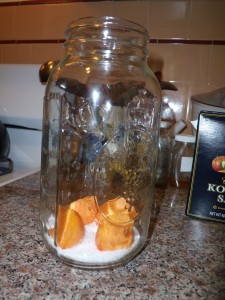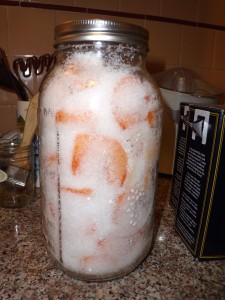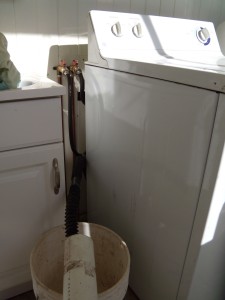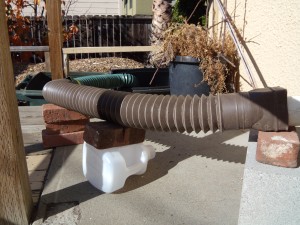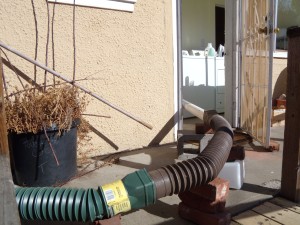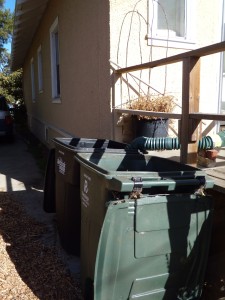As I mentioned in my post ‘Fall Blooming Plants for Bees,’ there wasn’t much honey to harvest this fall because our summer nectar flow occurred earlier than usual. In fact, I only took ‘extra’ honey from two colonies out of seven. While four others have some curing nectar and capped honey, they do not have the recommended 3-4 frames of capped honey, and I wonder if they will starve this winter.
It’s tempting to start feeding, but we have adopted the ‘natural selection’ view of beekeeping. The more we interfere, the more we facilitate the propagation of bees that require help to survive. We would rather propagate bees that can adapt to whatever conditions present themselves. Last year, we had one hive with zero stores going into winter that survived. In our climate and in the suburban locales where we keep our hives, the bees can find forage nearly year-round, if it’s not too cold to fly.
The Farmer’s Almanac calls for a bitterly cold winter this year, but the Almanac has been wrong for the last few years. We’ll keep our fingers crossed.
Four of the six hives I inspected through September had excellent populations, and two in particular had excellent brood patterns. Two of the colonies may ultimately dwindle. One had abandoned half of box two to wax moths, and I performed a massive clean-up job. The other seemed abnormally agitated, and their numbers seemed a little small.
I finished rearranging and condensing all the hives by mid-October.
With the use of follower boards, we’ve taken advantage of the ability to condense hives vertically rather than horizontally. For example, we had a small colony last fall that we could have condensed to one brood box, with 10 frames. Instead, we condensed to two brood boxes, with 6 frames each, under the assumption that a small cluster would be more able to move upward to their stores as a group, rather than disbanding to access stores on the outer edges of a box.
Follower boards have the added advantage of allowing for easier frame manipulation. When inspecting a hive, you remove one follower board and about 2″ of space opens up. The common configuration is 8 frames sandwiched between 2 follower boards per 10-frame box.
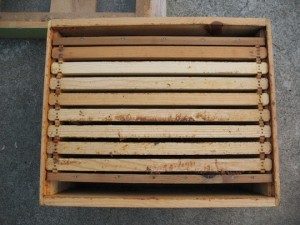
A standard 10-frame Lang box, with 8 frames sandwiched by follower boards.
For those who haven’t heard of follower boards, they are essentially solid frames. When I made them with a beekeeping friend, we used tongue-in-groove planks cut vertically to size (mediums or deeps). We also cut to size a strip of wood that acted as the top bar, and screwed it into the sections of wood. The ones I buy are made of 1/2″ plywood with solid wood top bars.

Homemade follower board, top; store-bought follower board, bottom.
In addition to allowing for a wider variety of hive configurations and making frame manipulation easier, Serge Labesque asserts that follower boards promote air circulation. In theory, air convects upwards from the entrance and screened bottom board between the outermost frames and follower boards and exits through the inner cover out of the nest. Excess moisture is transported out of the hive via this airflow. Further, the space between the outermost frames and follower boards has an insulating effect, protecting the brood nest from extreme heat in summer.
Beekeeping still remains much of a mystery to me. We continue to find whatever balance we can between caring for our bees and interfering with them as little as possible. We want healthy bees, but we don’t want the responsibility to be solely ours. In our struggle, we hope we are helping the bees become stronger.

